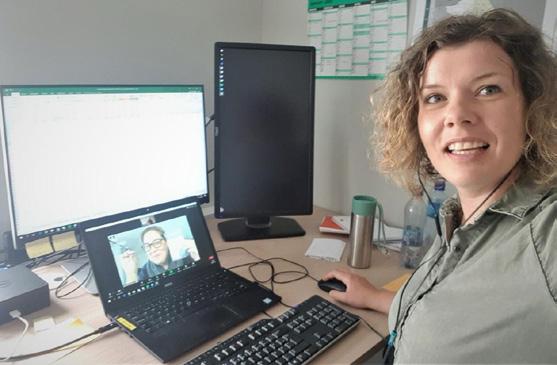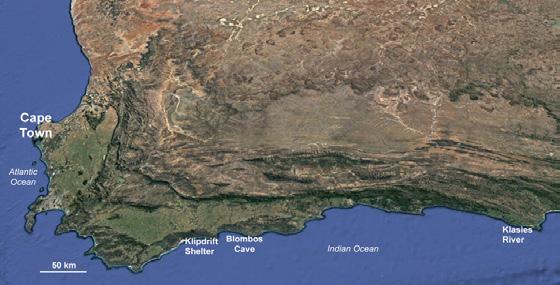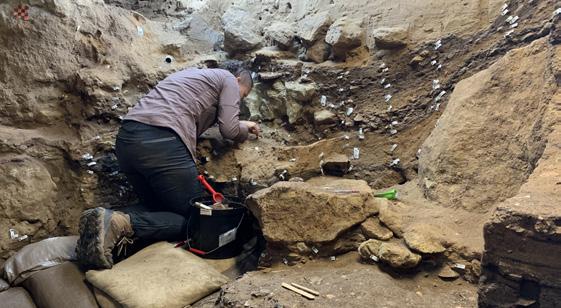ACTIVITIES IN 2020 16
COLLECTING STALAGMITES FROM BLOUKRANS CAVE In early March 2020, a group of four SapienCE researchers went to the De Hoop Nature Reserve in the Western Cape of South Africa, to collect stalagmites from Bloukrans Cave. These stalagmites contain long, highly detailed records of ancient changes in temperature, rainfall and vegetation. Although Bloukrans Cave isn’t an archaeological site, it is close to the excavations at Klipdrift and Blombos, so the information preserved in the stalagmites will help the SapienCE team to understand the climate and landscape experienced by our ancestors. This wasn’t our first trip to Bloukrans. In February 2018 we took small test samples from a number of stalagmites. Analysis of these samples by Stein-Erik Lauritzen, Nele Meckler and Jenny Maccali showed that they contained good climate records, and one particular stalagmite called “BL18-01” covered exactly the
time period that SapienCE is interested in. By the end of the week BL18-01 would have another name: Stalzilla!
INTO THE DARK The entrance to Bloukrans is a small hole at the foot of a cliff. Once inside, daylight fades quickly as you descend a long steep slope of sand and bat guano to reach the cave floor. Here it is pitch black, but noisy, with the dripping of water and screech of a thousand bats. Playing the light of your head-torch around the cave reveals a hundred stalagmites and stalactites and the occasional low-flying bat. BL18-01 stood on the sandy slope just above the cave floor. Impressive certainly, but not massive. Our jobs for the week were twofold. Firstly, we wanted to take a number of small samples from around the cave. Dating these samples, together with material collected in 2018, will give us a picture of when the cave was wet enough to produce





















